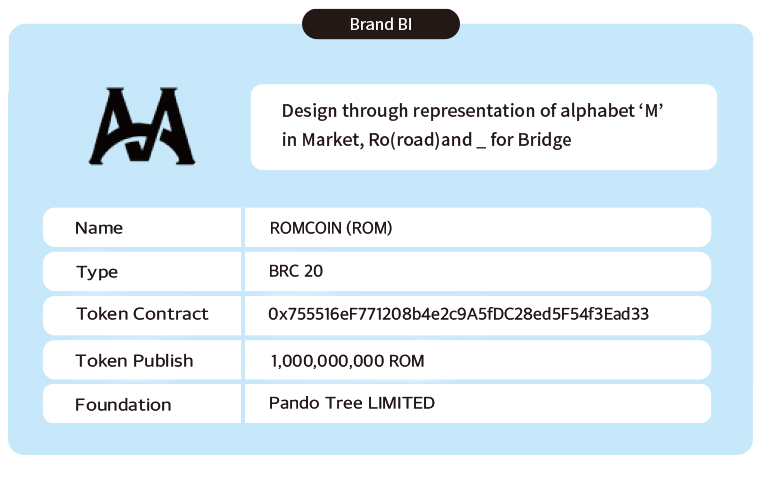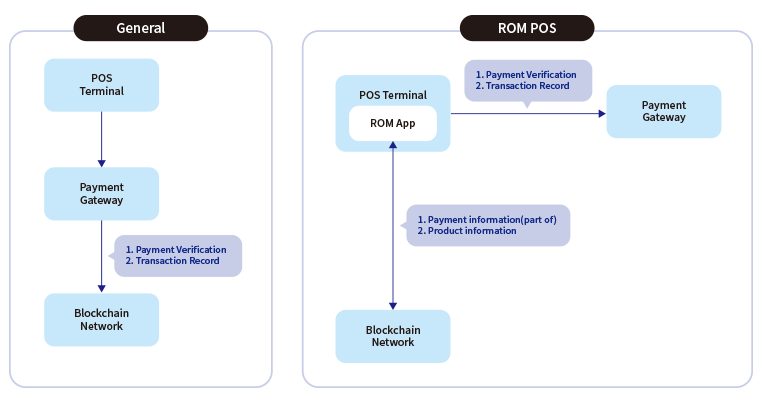
RoMCOIN
anywhere through the app

= RoMileage

Branch Coin
Operating Corporation
Instant currency optimized for each country's environment, anytime, anywhere through the app
The most convenient global currency exchange system, a free concept of remittance system
RoM COIN
Blockchain-based logistics distribution/tourism (travel) habits stored in blockchain, Travel + Shopping A coin that combines the advantages of cryptocurrency and business currency simultaneously


Consensus Algorithm
As ROM_COIN operates on a blockchain-based distributed ledger, it carries the responsibility and obligation to maintain a trustworthy distributed ledger at all times. To achieve this, ROM_COIN employs a consensus algorithm. The consensus algorithm verifies the validity of blocks and ensures the secure updating of the blockchain.
Two well-known consensus algorithms used in ROM_COIN are Proof of Work (PoW) and Proof of Stake (PoS). PoW addresses the problem of decentralization effectively but suffers from the high cost of resource consumption due to extensive hash calculations. PoS resolves the issue of excessive resource consumption but faces challenges such as the Nothing at Stake problem, Long Range Attack, and difficulty in achieving fair initial distribution. To address these issues, Delegated Proof of Stake (DPoS) was introduced. DPoS allows for faster transaction processing by utilizing a specific number of witnesses or delegates. However, concerns arise regarding collusion among witnesses and the potential for DDoS attacks on publicly exposed witnesses.
ROM_COIN adopts the RPoS (Random Proof of Stake) consensus algorithm, which combines the advantages of PoS and DPoS and improves upon them.
RPoS, or Random Proof of Stake, was chosen by ROM_COIN to enhance transaction processing speed. RPoS addresses the limitations of PoS, such as the inability to deal with illicit activities of nodes with significant stakes (such as the Nothing at Stake problem and the vulnerability to Long Range Attacks), as well as the concentration of power among witnesses in DPoS. RPoS resolves these issues by randomly selecting validators (witnesses) from a pool of 100 top active nodes (TAN) instead of relying solely on nodes with the highest stakes
By increasing the computational power and storage capacity of the active nodes performing the role of master nodes, ROM_COIN can enhance transaction throughput and speed. The selection of top active nodes is based on their stake, and from these nodes, 20 witnesses are randomly chosen to sequentially produce blocks in the blockchain.
Architecture of ROM COIN
Specification of ROM COIN(TO DO)
As ROM_COIN operates on a blockchain-based distributed ledger, it carries the responsibility and obligation to maintain a trustworthy distributed ledger at all times.
- Blockchain Name: ROM_COIN
- Consensus Algorithm: RPoS(Random PoS)
- Transaction Speed: at least 1,000TPS (60,000TX /min)
- Block Size: variable(1MB~4MB)
- Block Time: 5sec
- Block Number(per day): 17,280

ROM Payment

[general block chain payment vs ROM POS]
In g eneral, if you want to connect blockchain and POS payment, you have a flow as shown in the picture on the left. In other words, POS devices are terminals used by customers to purchase products and generate payment information. This information is sent to the Blockchain Network via the Payment Gateway. Payment Gateway verifies payment information and creates new transactions that are recorded on the blockchain network. Through this, payment transactions are immutably recorded on the blockchain. In this way, the POS device and blockchain are connected.
However, ROM POS takes information and stores it in the blockchain without disturbing the existing flow. As shown in the figure on the right, it does not store simple payment information (information for payment verification), but rather stores payment objects (products), payment subjects (stores/members), and some payment-related information.







